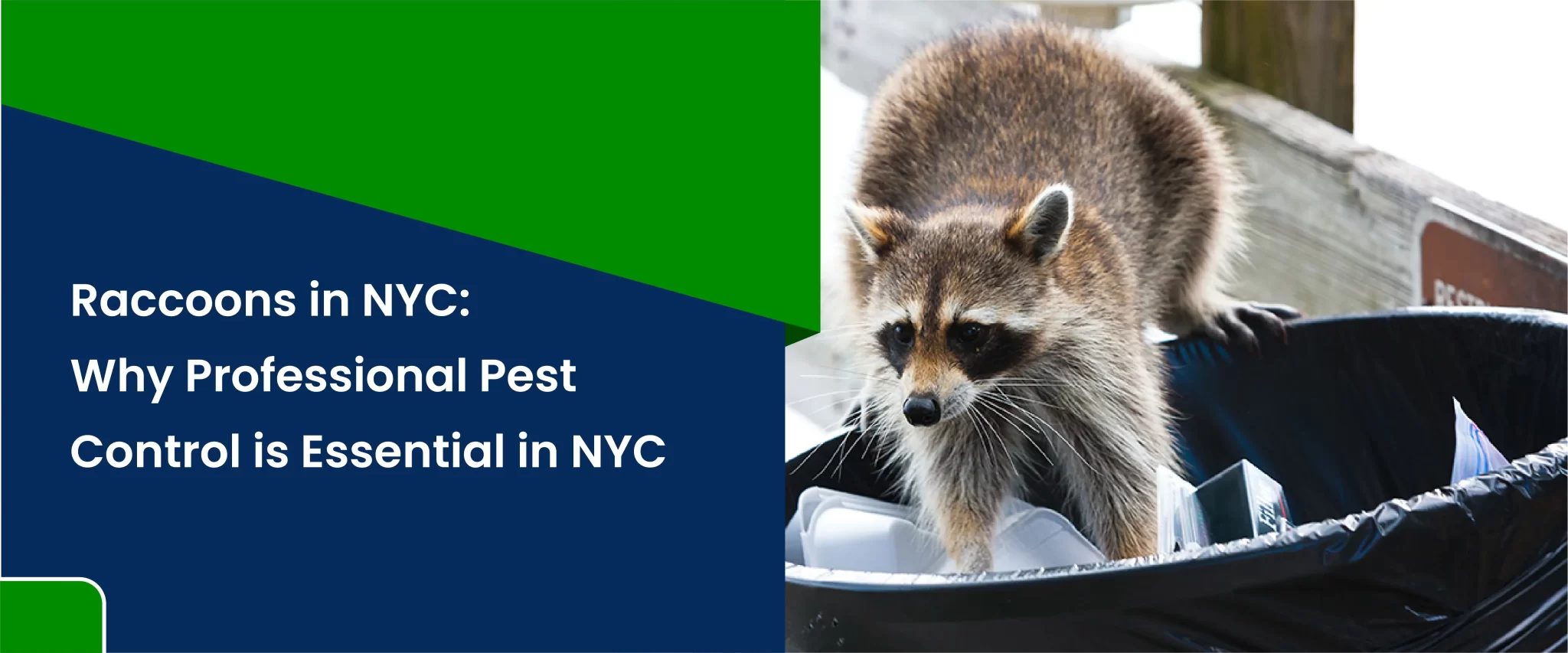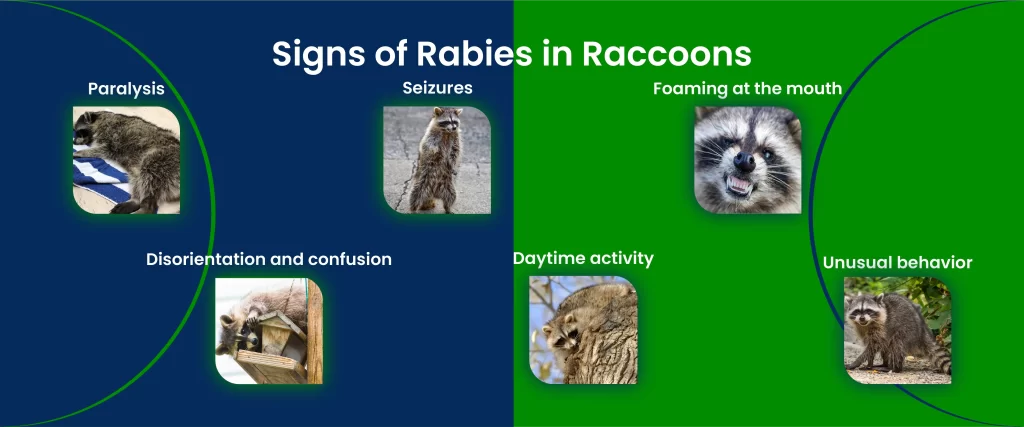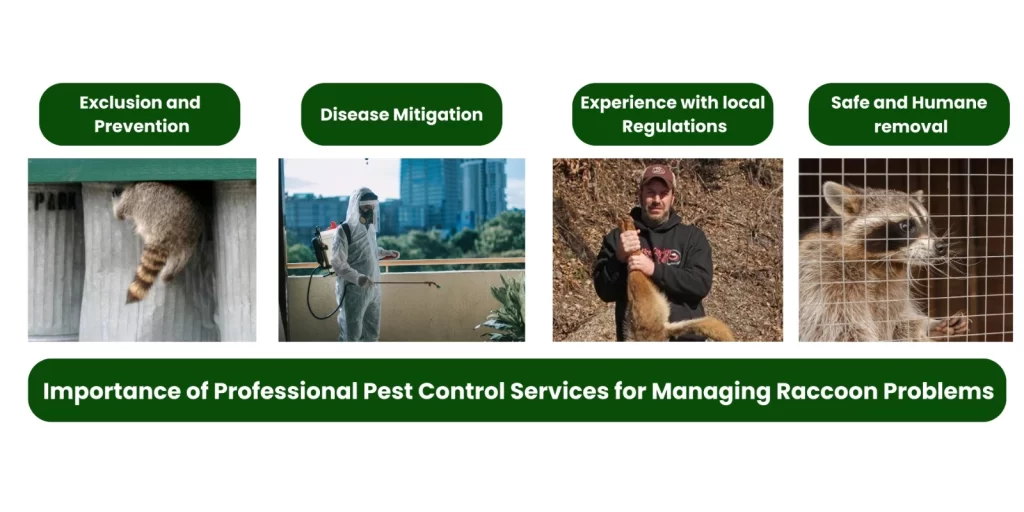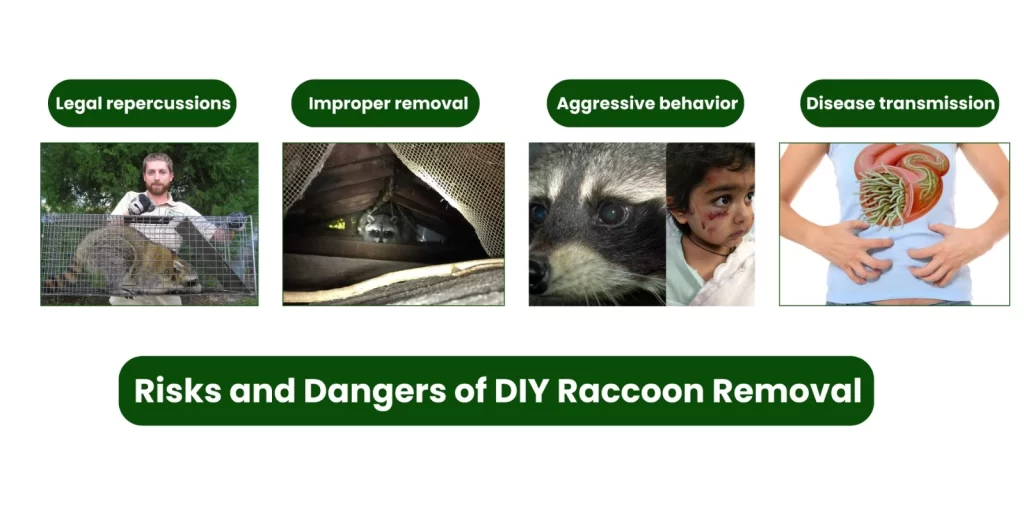
Raccoons are a fascinating but potentially problematic part of New York City’s wildlife. Nicknamed “trash pandas” for their fondness for rummaging through garbage, these intelligent and adaptable mammals thrive in the urban jungle. This blog post will explore the world of raccoons in NYC, focusing on why professional pest control is essential for racoon control in New York.
Why the Raccoons in New York City are Uncontrolled.
- Ubiquitous residents: Raccoons in New York City are the most widespread mammal, and is no exception. They can be found in all five boroughs, inhabiting parks, backyards, and even attics.
- Urban adaptability: NYC’s abundance of food sources, like overflowing trash cans and pet food, coupled with plentiful hiding spots in storm drains, attics, and trees, creates a perfect habitat for raccoons.
- Thriving population: Due to the lack of natural predators and a steady food supply, raccoon populations in NYC are likely much denser than in natural environments.
- Natural dispersers: Raccoons are highly adaptable and have a natural tendency to explore new territories. Over time, they gradually migrated from wooded areas into the fringes of human settlements.
- Urbanization and habitat loss: The growth of New York City provided unintentional havens for raccoons. As forests were cleared for development, raccoons readily adapted to the new urban landscape.
- Accidental introductions: Some theories suggest that raccoons may have been released by fur traders or escaped from zoos, contributing to the initial NYC population.
Raccoon Ecology and Behavior in Urban Settings
Typical behaviors:
- Nocturnal: Raccoons are primarily nocturnal creatures, emerging at dusk to forage for food. However, sightings during the day, especially mothers with young, are not uncommon.
- Omnivores: Their diet is remarkably diverse, including fruits, nuts, insects, small animals, and, unfortunately, garbage. Their clever hands allow them to pry open containers and raid trash cans.
- Intelligent and resourceful: Raccoons are known for their problem-solving skills. They can navigate complex environments, open lids, and even manipulate latches.
Habitat preferences:
- Dens: Raccoons seek sheltered areas to raise their young and rest. Attics, chimneys, and hollow trees in parks are prime denning locations.
- Urban corridors: Green spaces like parks and cemeteries provide travel paths and foraging grounds. Raccoons navigate the city using these green corridors and following waterways.
- Proximity to humans: Despite being wild animals, raccoons have become accustomed to living alongside humans. The easy availability of food sources in urban environments outweighs the potential risks associated with human interaction.
Population densities:
- Higher than natural environments: The lack of predators and abundant food sources in NYC allows raccoon populations to reach densities far exceeding those found in natural habitats.
- Fluctuations: Raccoon populations can fluctuate depending on food availability and denning sites. Construction projects can displace them, leading to temporary population shifts in specific areas.
How Raccoons Adapt to living in Close Proximity to Humans
- Nocturnal activity: By being primarily active at night, raccoons minimize contact with humans during the day.
- Food source exploitation: Raccoons have become adept at exploiting readily available human food sources like garbage cans and pet feeders.
- Den site selection: They readily utilize human structures like attics and chimneys as denning sites, providing them with shelter and raising opportunities.
- Boldness and habituation: Over time, raccoons in NYC have become accustomed to human presence. This can lead to them exhibiting bolder behavior in search of food.
Raccoon-Human Interactions and Conflicts
Raccoons, while interesting creatures, can become unwelcome guests in our homes and neighborhoods. Let’s delve into the conflicts that arise from sharing a city with these resourceful mammals.
Common Nuisance Issues Caused by Raccoons in NYC Neighborhoods

- Property damage: Raccoons in NYC can wreak havoc on attics, chimneys, and crawl spaces while seeking shelter. They tear insulation, chew wires, and leave droppings, causing significant damage.
- Noise complaints: Their nighttime activities can be disruptive, with scratching, scurrying, and vocalizations disturbing sleep.
- Messy scavengers: Their relentless search for food leads them to raid trash cans, leaving a trail of garbage and attracting other pests.
- Pet dangers: Raccoons can pose a threat to pets, especially smaller animals, due to their opportunistic nature.
Signs of Rabies in Raccoons

- Unusual behavior: This is a hallmark sign of rabies in raccoons. Look for behavior that is either extremely aggressive or strangely docile. Aggressive behavior can include hissing, biting, or swiping, while abnormally tame behavior might involve approaching humans or unfamiliar animals without fear.
- Disorientation and confusion: Rabid raccoons will often appear lost and disoriented. They may walk in circles, stumble, or have trouble moving around.
- Paralysis: The rabies virus attacks the nervous system, which can lead to paralysis, especially in the hind legs. A rabid raccoon might drag its legs or have difficulty walking.
- Foaming at the mouth: This is a classic sign of rabies, but it’s not always present. Rabies can cause excessive salivation, and raccoons may foam at the mouth due to an inability to swallow.
- Seizures: In later stages of rabies, seizures are a common symptom.
- Daytime activity: Raccoons are typically nocturnal creatures. Seeing a raccoon out and about during the day can be a sign of rabies.
How to Get Rid of Raccoons in NYC
Importance of Professional Pest Control Services for Managing Raccoon Problems

- Safe and humane removal: Professionals have the expertise and equipment to safely remove raccoons from your property, minimizing stress on the animal and ensuring human safety.
- Exclusion and prevention: They can identify entry points and seal them with appropriate materials to prevent future raccoon invasions.
- Disease mitigation: Trained pest control companies can properly clean and disinfect areas contaminated by raccoon droppings, minimizing the risk of parasite and disease transmission.
- Experience with local regulations: There may be local regulations regarding wildlife removal. Professionals understand these regulations and ensure all procedures are followed correctly.
Risks and Dangers of DIY Raccoon Removal:

While some may be tempted to handle a raccoon problem themselves, the risks outweigh the potential benefits:
- Disease transmission: Attempting to remove a raccoon yourself increases the risk of exposure to parasites and diseases through bites or contact with droppings.
- Aggressive behavior: Cornered or threatened raccoons can become aggressive, leading to bites or scratches that require medical attention.
- Improper removal: If not removed correctly, the mother may be separated from her young, leading to further problems and animal suffering. Additionally, improper sealing of entry points allows other raccoons to take up residence.
- Legal repercussions: In some areas, there are legal restrictions on how you can handle wildlife removal. DIY attempts could lead to fines or penalties.
Reasons why professional pest control is recommended
In conclusion, when dealing with raccoons in NYC, professional pest control services offer a safe, effective, and humane solution. They minimize health risks, prevent future problems, and ensure your property is free of these unwanted guests. Their expertise protects both you and the raccoons, promoting a safer coexistence in the urban jungle.


